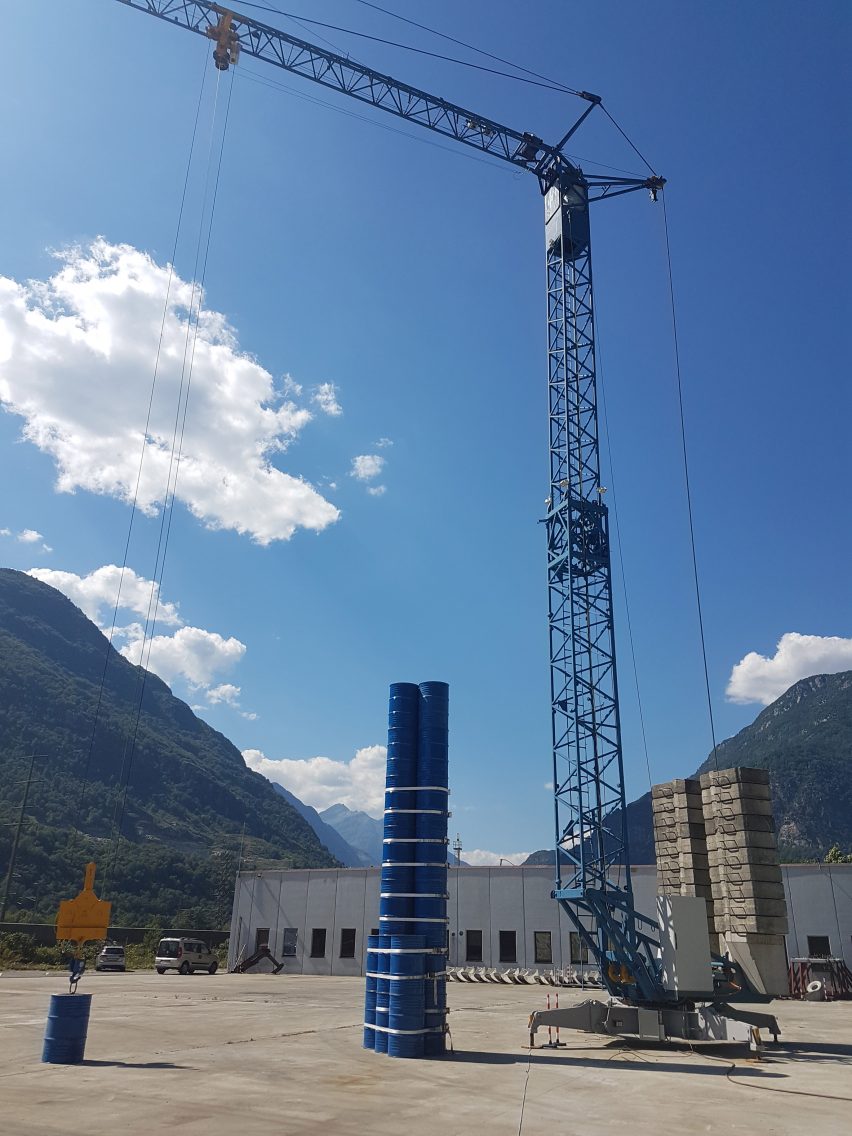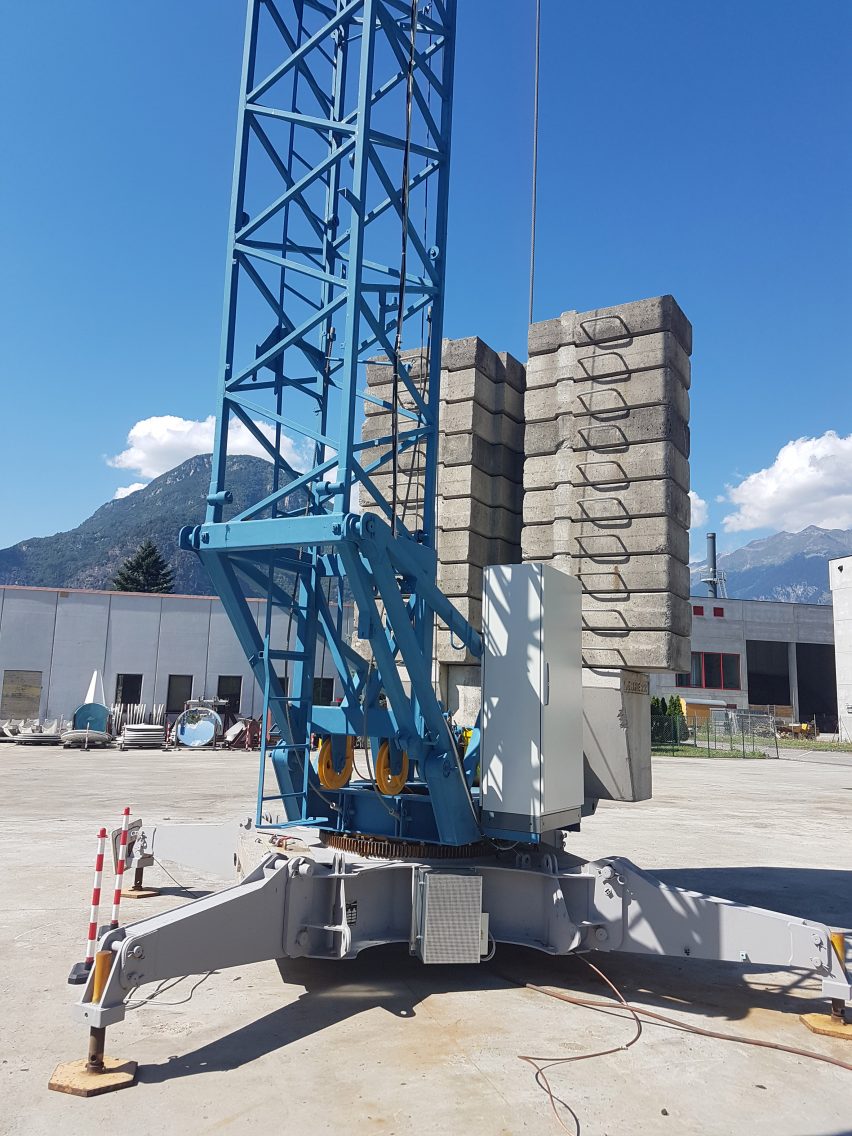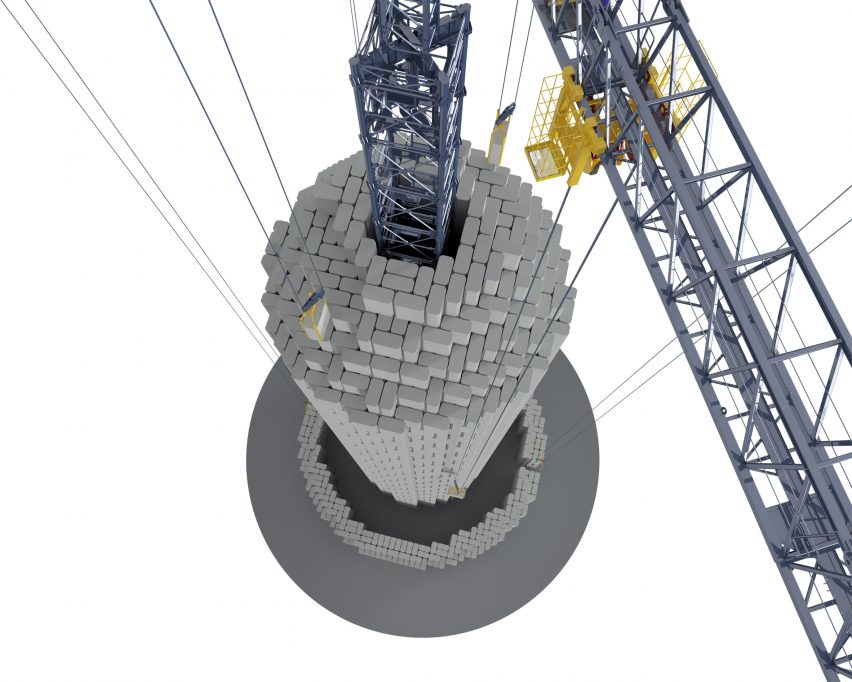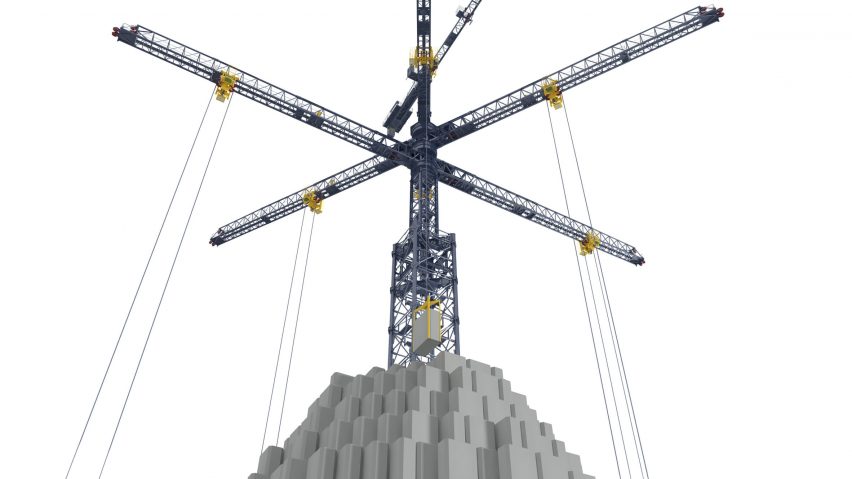Energy-storing concrete bricks could be key to proliferation of renewables
Renewable energy could reliably power the grid at peak times using an eco-friendly and cost-effective storage solution designed by Swiss start-up Energy Vault.
The technology, which works by moving concrete bricks around, has more longevity than batteries and more versatility than pumped hydroelectricity — two major current methods for storing energy.
It offers a possible solution to one of the key problems of renewable energy sources like wind and solar, which need to be stored for later use, because they are produced intermittently.

Energy Vault says the system delivers base load power cheaper than fossil fuels.
"The world needs rapidly scalable and sustainable energy storage solutions to meet one of the most urgent challenges — the need to decarbonise our energy generation," said Energy Vault co-founder and CEO Robert Piconi.

"In addition to the vital environmental benefits that it provides, the system's radical reduction in cost per kilowatt-hour and overall levelised cost of storage enables our customers to provide dispatchable and base load power cheaper than fossil fuels for the very first time."
Energy Vault announced it was making its technology commercially available in November, at the same time as it announced a partnership with Indian company Tata Power to build its first plant, a 35 megawatt-hour system, in 2019.

Energy Vault's autonomous system combines proprietary software and a six-arm crane to move blocks of concrete in response to changes in energy production and demand.
It works on the same principle as a pumped hydroelectric plant, which stores electricity as gravitational potential energy. At times when electricity is plentiful and cheap — for instance, on a sunny day for solar energy — a pumped hydro plant uses it to move water up to a higher elevation.
When electricity is scarce — after dark, in the solar example — it drops the water down, passing it through a hydroelectric turbine to harvest the energy.
Energy Vault's system replicates that effect with 35-tonne bricks, stacking them into a tower when electricity is abundant and releasing them to generate energy.
The system has advantages over hydro, because it doesn't require a specific topography and doesn't have the negative environmental impacts.

Energy Vault says its system is also more efficient and cost-effective, offering savings of 50 per cent or more over existing solutions. The blocks are made with waste concrete, and the lifetime of one plant is upwards of 30 years.
It also avoids the pitfalls of chemical storage solutions like Tesla's Powerwall, which degrade over time, requiring new batteries to be manufactured.
Energy Vault says it already has agreements with customers on multiple continents, and is working with CEMEX Research Group AG to rapidly develop and deploy the technology.